Disclaimer: This website contains affiliate links, from which Heritage Acres Market LLC may receive a small commission from the vendor on the sales of certain items, all at no cost to you. Please read our full disclosure for more information. Thank you for supporting Heritage Acres Market LLC!
When you think about birds that lay eggs for eating, chickens are usually the first thing that comes to mind. The same is true of poultry you can use for meat production.
Chickens take up quite a lot of space and are not permitted in many urban locations. Coturnix quail, however, are your cute mini alternative to chickens, and you don’t even need a backyard to keep them in. So could Coturnix quail be a real alternative to raising chickens? Let’s find out!
Listen to our Backyard Bounty podcast episode about keeping Coturnix quail here.
Is the Coturnix Quail right for you?
- Easy to keep and care for
- Small – requiring minimal space
- Game birds that are not native to the US so can be kept in many cities and urban areas where chickens are not permitted
- Quiet – females make virtually no noise, so won’t disturb your neighbors
- Cheap to buy and to feed
- Good egg layers – giving between 150 to 300 eggs in a year
- Quick to mature – producing eggs and meat much faster than chickens
- Not broody – they won’t waste time sitting on eggs
Table of Contents
Not Local
Because Coturnix quail are a non-native species of game bird and not classed as farm poultry like chickens, there are few regulations about keeping them in an urban environment. Quail actually enjoy being in small enclosed spaces together. Unlike backyard chickens, you don’t need any outdoor space, although if you do have a yard, that’s great too.
Let’s find out more about these pint-sized birds and the advantages they have over chickens.
Background and History of the Breed
Quail are from the order “Galliformes” which are any of the gallinaceous (fowl or chicken-like) birds with many different species and subspecies, including chickens, turkeys, pheasants, partridges, peacocks, grouse, guinea fowl, and of course quail.
Some galliforms are part of the “Phasianidae” family meaning pheasant-like. Or the “Odontophoridae” family which are birds resembling partridges. Quail fall into both families – Phasianidae being Old World quail with almost 100 species and Odontophoridae being New World quail with at least 32 species.
The quail we will be looking at here are the Coturnix, also known as Japanese, Pharaoh, or Coturnix Coturnix Japonica. The ancient ancestors of these birds came from Chinese quail that were exported to Japan, where they were bred in captivity for centuries, to become the Coturnix quail of today.
There are several new world quail native to North America. These wild quail breeds include:
- Bobwhite quail
- California quail
- Mountain quail
- Gambel’s quail
- Scaled quail
- Mearn’s quail
Although some native quail species are kept for sport, meat, and occasionally eggs, they are not as fast-growing, docile, and productive as Coturnix quail.
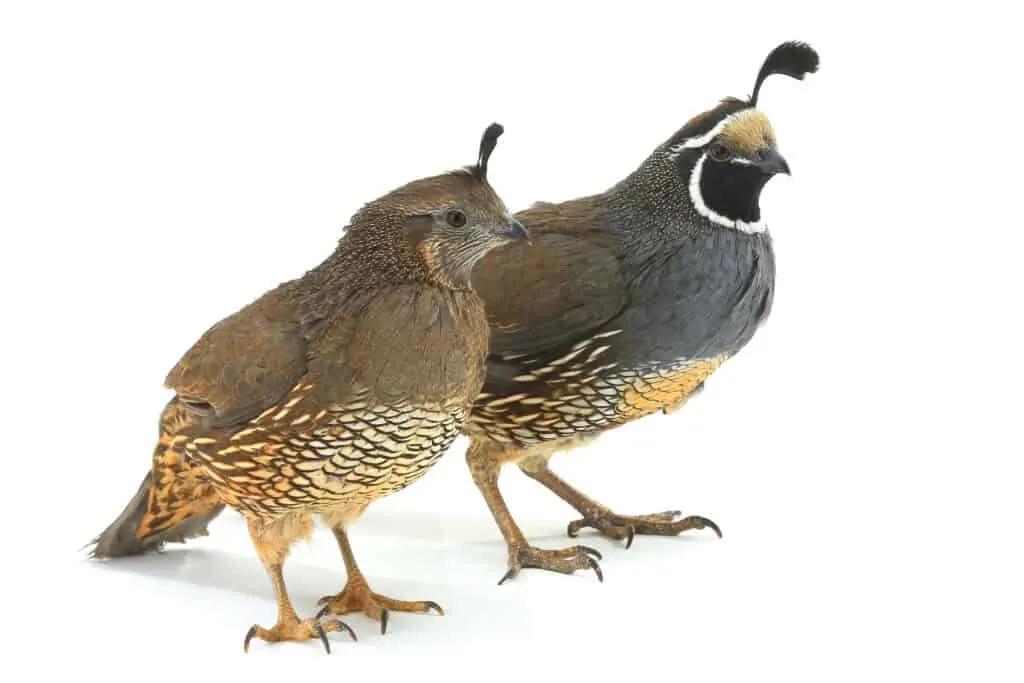
Interesting Facts about Coturnix Quail
Some experimentation was conducted on animal imprinting. It was found that male Japanese quail had preferences about their chosen mates. They preferred individuals that resembled the family members they imprinted on as chicks. They liked them to share similar features but not be identical. This is because it ensures they only try and mate with members of their own species while reducing the possibility of inbreeding.
Due to being raised as captive birds for so long, they have lost almost all of their abilities to raise young. Other species of quail are known to share chick raising duties between both the male and female, while some will build two nests, lay two clutches of eggs and parent the broods simultaneously with the father taking care of one and the mother the other.
Although several breeds of quail are endangered or threatened with extinction, the Coturnix is not among them.
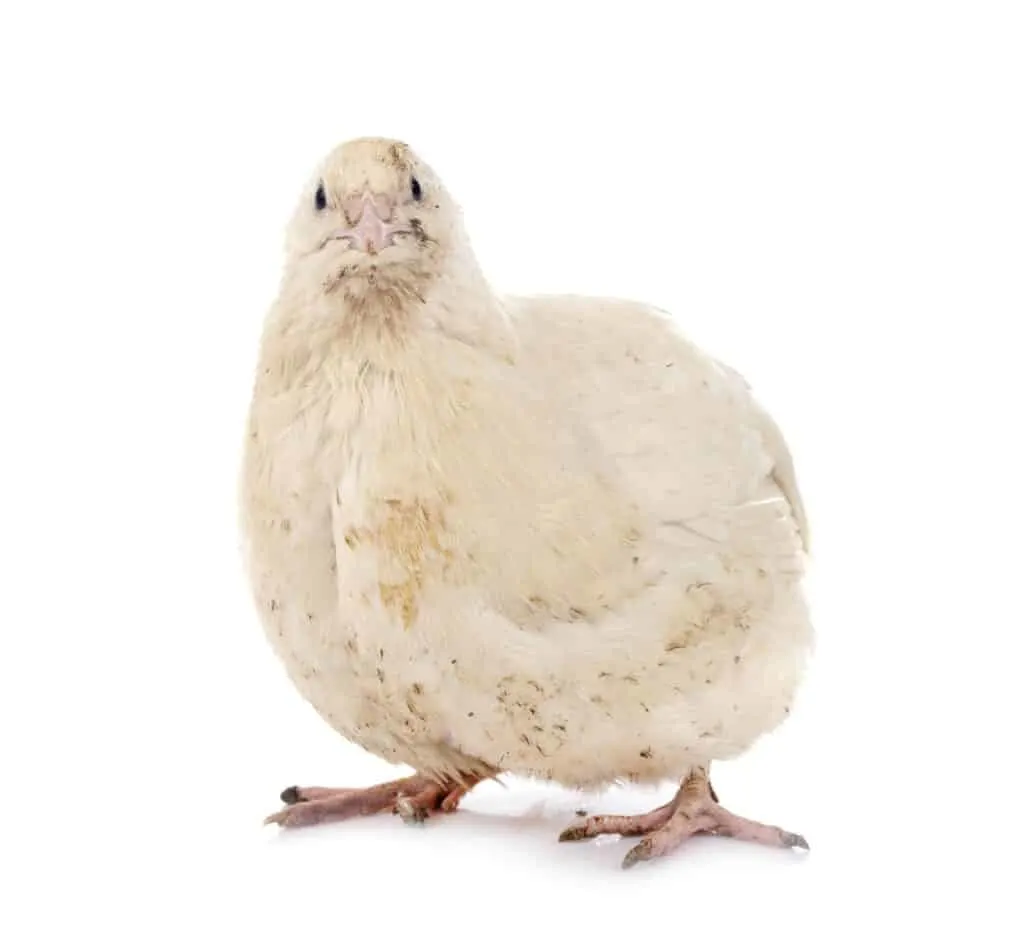
Temperament and Behavior
Quail are shy ground-dwelling birds. Coturnix that are hand-raised from a young age can be easily tamed with regular gentle handling. For this reason, they are suitable for keeping by older children. However, they are not recommended for young children, as they are small and delicate, so they could be accidentally hurt.
The docile nature of the Coturnix also makes them suitable for a beginner. They are relatively tolerant of human handling, quick to mature and have few needs above water, food, shelter, and security. If you tame your chicks, they even learn to enjoy human contact and the receiving of treats.
Although Coturnix will hurry around in a larger coop, they are quite docile and easy to catch. This is not the case with many other varieties of quail, which can be very nervous and flighty.
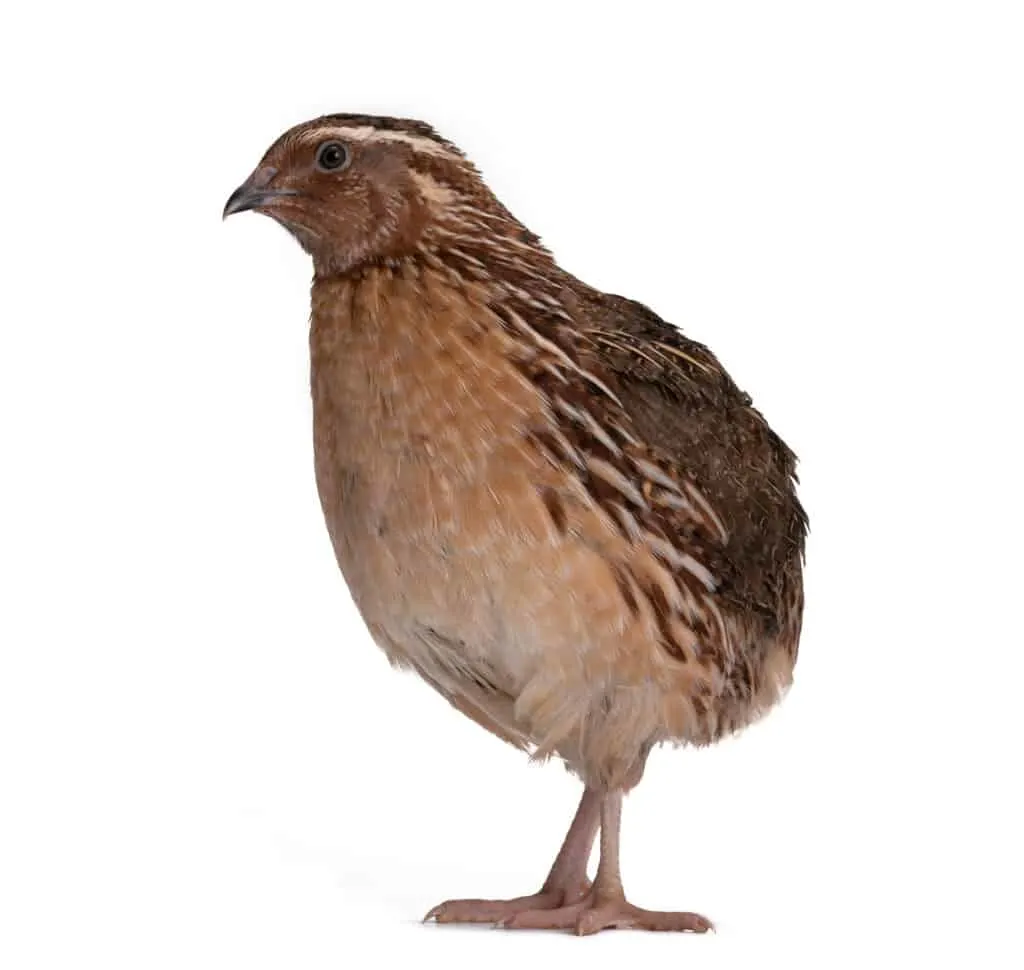
There is no predisposition to broodiness in Coturnix quail, in fact, they make terrible parents and the best way to breed the birds is by incubating their eggs. Alternatively, give them to another bird, such as a silkie chicken or a pheasant to brood.
Quail have something of a reputation when it comes to being aggressive towards their flockmates. Certain situations make this problem far more likely and the birds will fight to the death under certain circumstances. Young males attack each other and shouldn’t be kept together. It’s best to keep a minimum of four females to one male. In established flocks, there are only occasional spats, but be careful when introducing new birds into a flock, as quail are quite territorial and this can cause problems.
Female quail make almost no noise at all, but the males do make a screeching noise that might annoy your neighbors. The good news is that you don’t need to keep any male birds in order to get quail eggs.
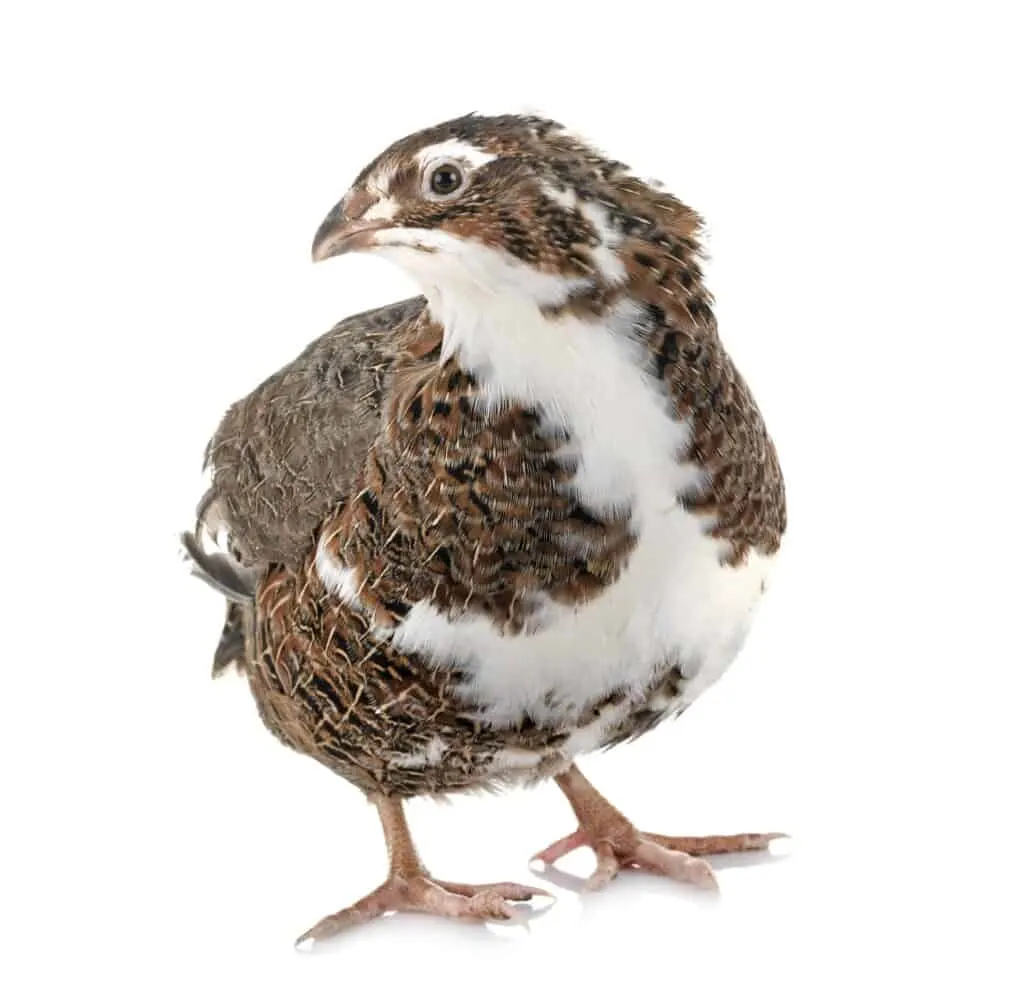
Quail Breed Specifics and Traits
Uses – Coturnix quail are dual-purpose birds suitable for both egg and meat production. The Jumbo variety, being larger, is often preferred for meat production. Other species of quail, such as the Bob White, are also popular for gourmet meat bird.
Weight – As mentioned previously, quail are small birds.
Adult birds weight: Male = 3.5 to 5 ounces. Female = 4.2 to 5.6 ounces. Jumbo = 10 to 16 ounces.
Lifespan – On average quail live for approximately 3 to 6 years, this is dependant on many factors. It is common practice to raise a meat bird only until they reach maturity at 8 weeks of age and dispatch them then. Otherwise, they are only kept for a maximum of one year. Egg-laying hens are usually kept for a maximum of two years, as quail egg production and viability reduce with age. If you only keep your quail as pets, they can live for 6 years or more.
Chick appearance – Quail chicks can range from golden yellow in color all the way through to almost black with yellow patches. The coloration depends on the variety of their Coturnix parents.
Color and type variations – There are many different color varieties of Coturnix Quail, including:
Pharaoh quail- Also known as the brown quail, are the original color of Coturnix and the most common quail. They can be sexed according to their color at around 3 to 4 weeks of age. Male birds have a rust-colored chest with no darker feathers (speckles), while the females have a cream color chest with a speckling of darker feathers
Jumbo Coturnix – A larger, selectively bred bird that is generally used for meat production. There is no difference in the species, Jumbo’s are just large Coturnix birds that have been selectively bred to make them bigger. They are sometimes called Jumbo Brown or simply Jumbo quail.
English White – A smaller bird that can be completely white or with brown spots on its back and head. A feature of this bird is that its skin is white
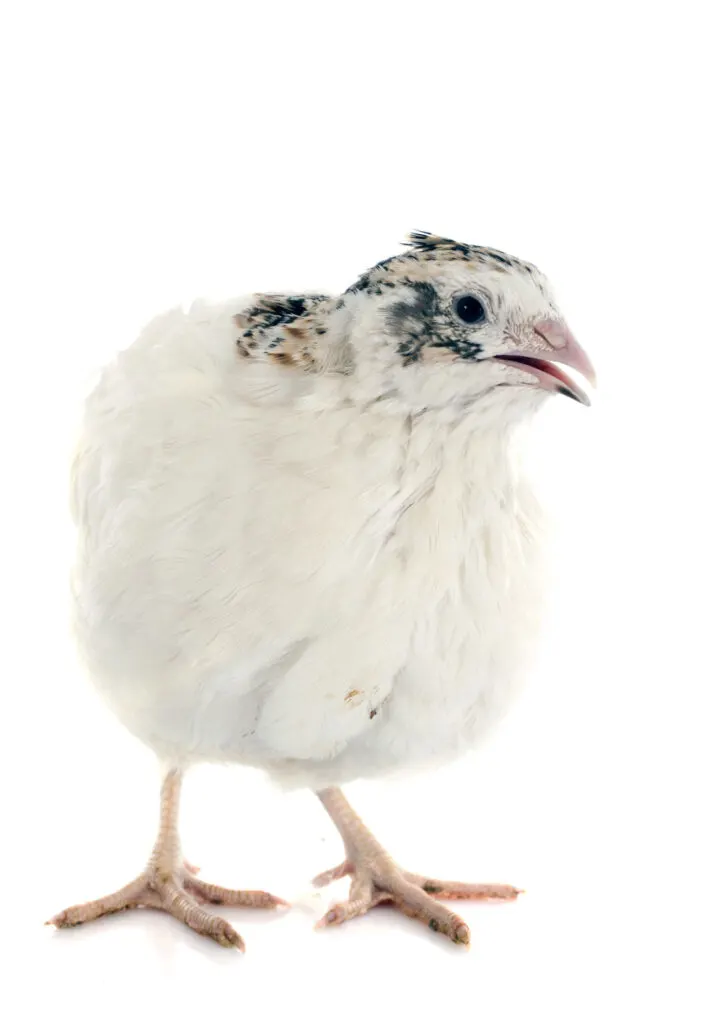
Texas A&M – Has pure white plumage, is heavily muscled and produces better meat yields than some other varieties. It is a jumbo variety and weighs between 10 and 13 ounces and, like the English White, it has white skin. It was developed by professors at the Texas A&M University
Tibetan – A rich dark brown bird that was developed by cross-breeding and has two extended brown genes that produce its coloration
Rosetta – Like the Tibetan, was developed by selecting birds with the extended brown gene, except in this case, it only has one copy instead of two. Breeding Rosettas together, gives you 50% Rosetta, 25% Tibetan, and 25% Pharaoh chicks
Tuxedo – By cross-breeding Tibetans to Texas A&M birds, the color pattern of Tuxedo was created. The color variations within this pattern can be a wide variety of those exhibited by Coturnix Quail
Golden Coturnix – These can either be standard or jumbo. They are sometimes also called Golden Speckled or Manchurian
Italian– Are a golden buff color with some darker feathers. Like the Pharaoh quail, they can be feather sexed but usually after 4 weeks of age.
New color types are being developed all the time. It can be quite fun to cross-breed different colors of Coturnix to see what color variations you get.
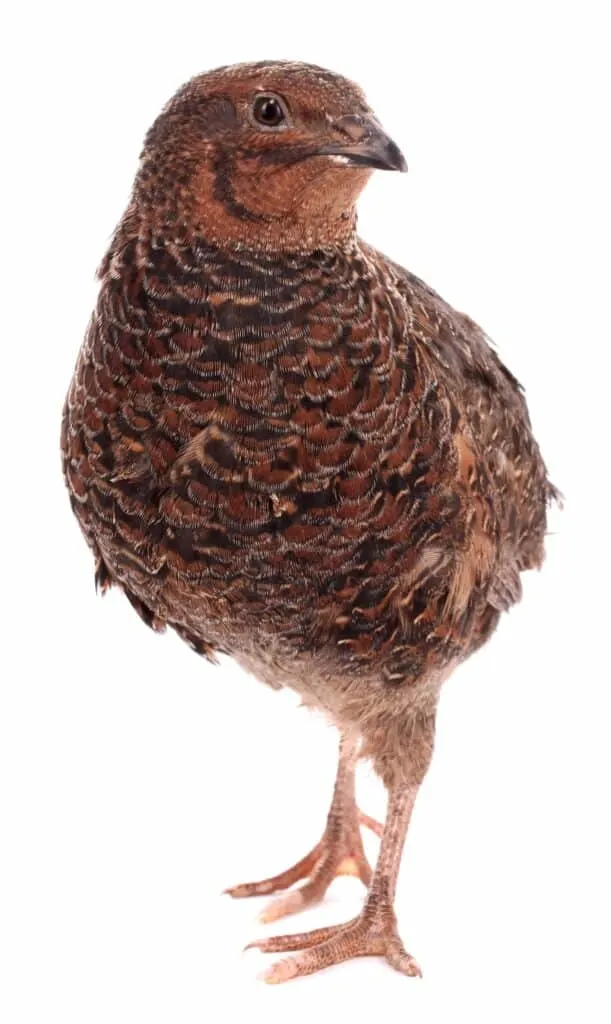
Males vs Females – It’s challenging to tell male and female quail apart. As you will have seen above in the color descriptions Pharaoh and Italian can be sexed from the color and patterns of their chest feathers, other color variations cannot.
The easiest way to sex quail is to wait until they mature. A male coturnix quail has a distinct screech-like call. If you look at their vents during the breeding season, male quail have a bulbous area called the cloacal gland just above their vent. If you press on it very gently, a white foam-like substance will be produced. It is believed this foam helps with sperm motility during mating. Females have no such bulbous area and their vents are generally slacker in appearance due to laying eggs.
Weather Hardiness – They are quite tolerant of both cold and heat. If they get wet and cold from rain and wind, it can prove fatal, so providing a good shelter is essential.
Predator resistance – The best defense quail have against predators is their camouflage plumage. They huddle down close to the ground and try to bury themselves under branches or in thick undergrowth to evade predators and rarely take flight. Like all birds, quail are prone to attack from:
- Hawks
- Owls
- Foxes
- Opossums
- Skunks
- Snakes
- Weasels
- Mink
- Bobcats
- Bears
- Raccoons
- Coyotes
- Wolves
- Dogs
Quail are also very susceptible to domestic cats and rats.
To prevent predators from killing your birds, it’s necessary to keep them in very secure cages. A small holed wire mesh will help stop rats and snakes from gaining access to them.
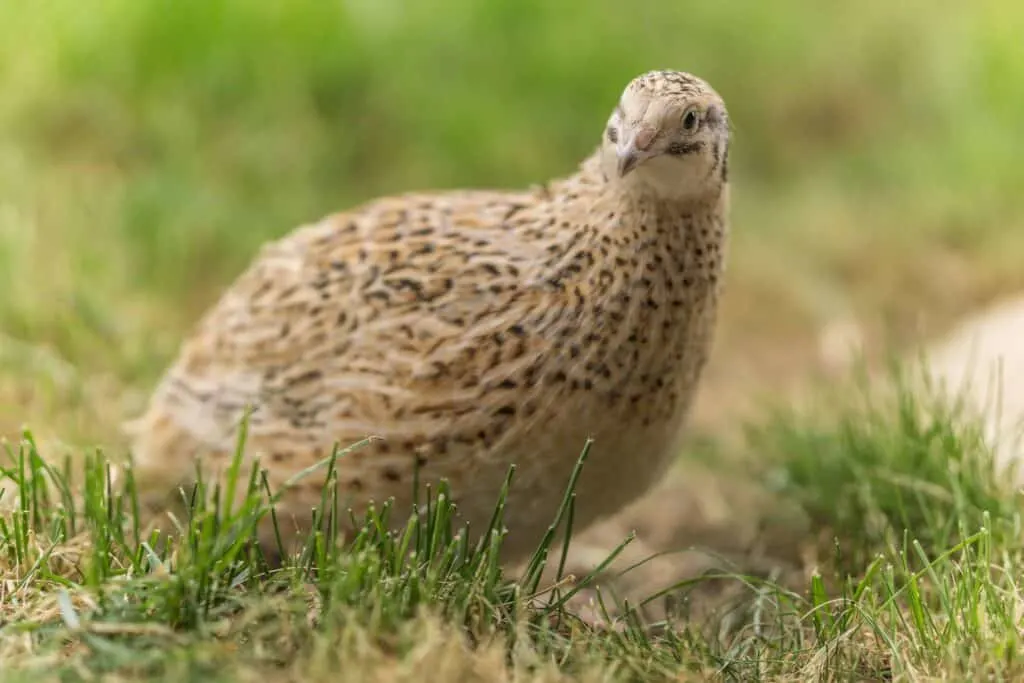
Flying ability – Although Coturnix quail can and do fly, they usually scurry around on the ground. They are unsuitable as free-range birds, as once they fly away, they will not return.
Health – Generally, these birds are pretty hardy. Providing they receive the correct feed, are given fresh water each day and their environment is cleaned regularly. Good hygiene is the key.
Like chickens, they can be susceptible to lice and mites. A tray filled with sand will encourage them to dust bath, helping to reduce the number of mites and lice.
Other health problems can include:
- Intestinal worms
- Egg Binding
- Bumblefoot
- Coccidiosis
- Ulcerative Enteritis
- Infectious Coryza
- Equine Encephalitis
When a quail is unwell, it typically stops eating and will look hunched up and sick. You need to take action quickly, as the birds are so small they die very fast if left untreated.
Quail are shy birds that like to live in groups. Having a single quail is not a good idea as it will become depressed without companions. The perfect ratio is four or five hens to one cock.
If you have an aviary, then you can keep several groups together. Adding new birds to an already established flock can be difficult. Quail are very territorial and have a pecking order. If you want to add new birds, do it two or three at a time. To begin, separate them but keep them next to each other, so they can get up close but can’t actually touch one another. They should be left like this for several weeks. When you decide to introduce them, observe the birds for several days to ensure that no one is getting picked on.
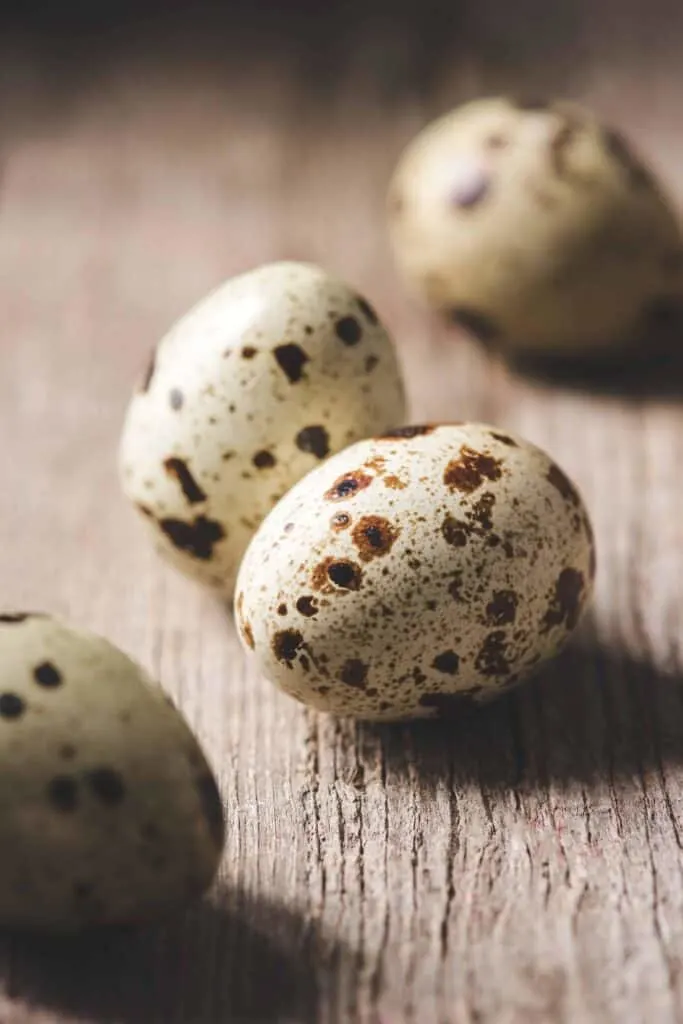
Eggs
Laying Age – Female Coturnix start laying at 7 to 8 weeks of age and will continue throughout their lifetime with a reducing number each year.
Egg Color – Eggs exhibit a mottled pattern with a white or cream background and random darker patches and speckles on top that can range from almost black to pale grey. A single female always lays eggs of a similar color pattern.
Egg size – The quail egg is about a quarter of the size of a standard chicken egg.
Number of eggs per year – Patrick Daly, an animal science and veterinary public health feed mill engineer, said that commercially bred quail can lay as well as the best chickens with up to 250 to 300 eggs in their first year and this will steadily decline in subsequent years.
Egg quality – Quail will produce high-quality eggs for the first year or two of life. After this time, the viability of the eggs and the number they lay each year will diminish.
Egg production – They require 14 to 18 hours of good light per day to maintain full egg production. Artificial lighting is required in winter if you want eggs. The standard Coturnix quail egg season is March or April through to October. If you force your quail to lay eggs in winter, you will shorten their lives significantly, as producing eggs takes a lot of effort.
Egg-laying habits – If you’re keeping quail for their eggs, then be aware that they will lay almost anywhere, wherever they happen to be, when the urge takes them. This isn’t such a problem if you keep them in a cage, but if they are free-range in a large coop, you may have more trouble tracking down the delicious little nuggets!
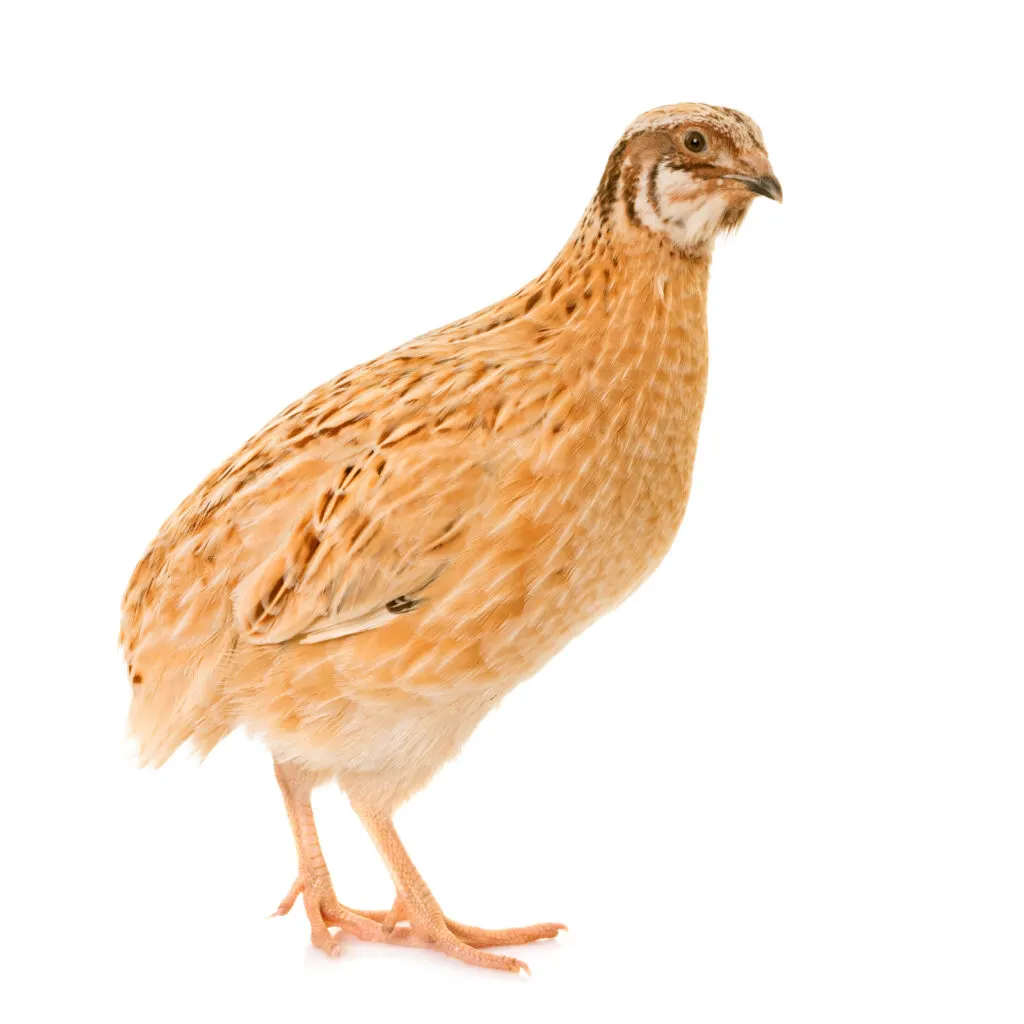
Meat
Quail reach maturity for the table in approximately 8-weeks. Their meat is dark in color with a rich gamey flavor. At least one bird is required per person.
Males not being kept for breeding, and any quail raised only for meat, should receive a maximum of eight hours of light exposure per day. This amount of light is not enough to initiate sexual maturity, which prompts quail to waste energy fighting and mating. Quail will fatten quicker with light reduced.

Where to Buy Coturnix Quail
You can buy quail from hatcheries or from other hobbyists raising them in your area. Chicks and young birds don’t tolerate being posted very well, so if you want chicks, it is preferable to find a hatchery local to you. It may be preferable to get fertile eggs sent to you in the mail and hatch them out yourself.
Chicks
Cackle Hatchery offers unsexed Pharaoh Coturnix chicks (minimum order 50) for $117.50 and hatching eggs starting at $1.08 each.
Cackle Hatchery is our preferred and recommended hatchery. They are also highly rated on Google and have been in business since 1936.
Fertile eggs can also be found on Amazon, eBay and Craigslist.
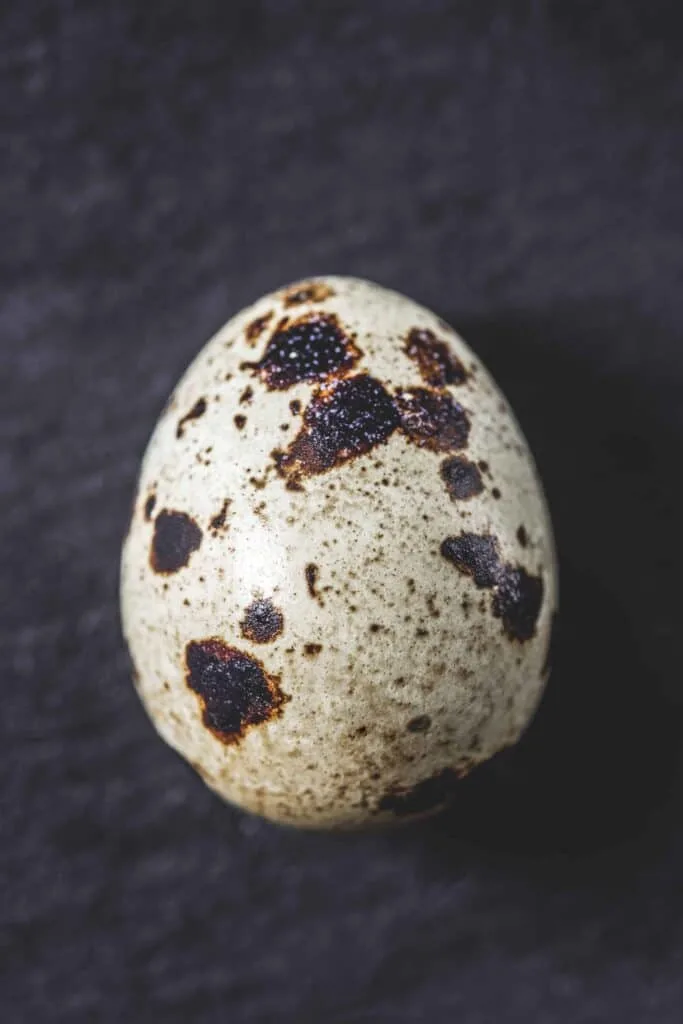
Hatching Eggs
Once you’ve got your fertilized quail eggs, keep them at room temperature (approx 68°F to 72°F) for about 12 hours before placing them into an incubator. During this time, put them fat end up in a clean, dry egg carton.
Ensure your incubator is well situated. It must be placed somewhere out of the sun and in a room that generally keeps a fairly consistent heat level.
To be viable, your eggs should be no more than 10 days old from hatching.
Set up your incubator a few days in advance to check everything is working correctly. Check it is maintaining a stable temperature and humidity level.
Incubation Time: Fertilized Coturnix Eggs will hatch in about 17 to 18 days after you place them in the incubator.
Temperature: To start, set the incubator at 99.5°F or 100°F. Reduce the heat to 98.5°F on day 16 and maintain for the final three days of incubation.
Humidity: Start with the humidity at 45-55% until day 14. Then raise it to 55-65% until your chicks hatch.
Turning: If you are using an incubator without an automatic turner, the eggs should be turned by hand a minimum of four times a day for 14 days. For the remaining 4 days, you don’t need to turn the eggs.
Incubators with an automatic turner will turn the eggs regularly for you. Ensure that the egg turning is off for the final four days.
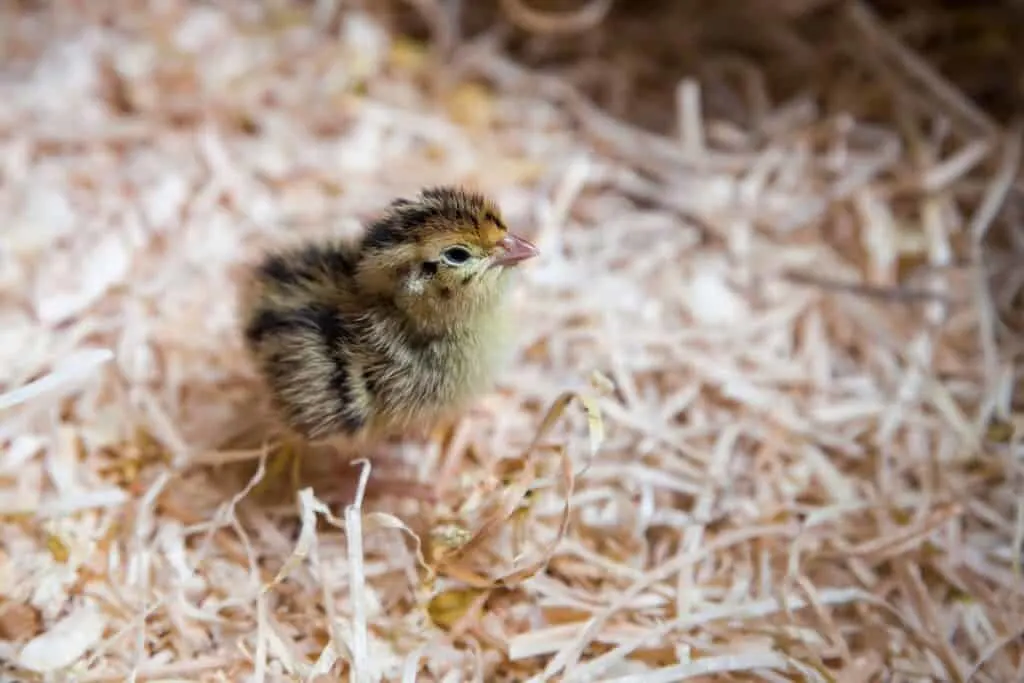
Raising Quail Chicks
Once you’ve successfully hatched or purchased some young quail chicks, you’ll need to care for them carefully.
Chilling or overheating of young chicks can prove fatal, so maintaining the correct brooding temperature is vital for the first four weeks. The temperature in the brooder should be 95°F to 97°F at chick level. This can be reduced by 5° per week until 75° is reached and chicks are fully feathered.
Infrared heat lamps are not the best things to use for raising chics. It is firstly very unnatural for chicks to be in the light at all times. The bulbs can cause fires and become too hot for your chicks, as the temperature regulation is hard to control. Another problem is the bulb failing, leaving your chicks without any heat until you notice.
A better solution is to use a heat plate. Although they are more expensive to buy, they mimic the heat of a mother hen much better than a lamp, and the power consumption is far less. They have adjustable legs so you can raise and lower the height to produce the perfect temperature for your chicks.
If you do use a heat lamp, check how hot it is directly below it. Ensure it is well secured to prevent fire and take a thermometer reading regularly. Your chick’s behavior is a good guide for temperature control. If the chicks are all crowding underneath the heat source, they are too cold. If too hot, the chicks will try to move away from the heat source. Comfortable chicks generally scatter about the brood box.
Choosing the correct brood box is also essential. It must be dry, easy to clean and heat, and be adequately ventilated. It should offer good protection for the chicks, keeping them safe from cold, rain and any predators.
Glass vivariums and large plastic storage boxes can be successfully transformed and used as brooders, with a few adjustments to ensure good ventilation.
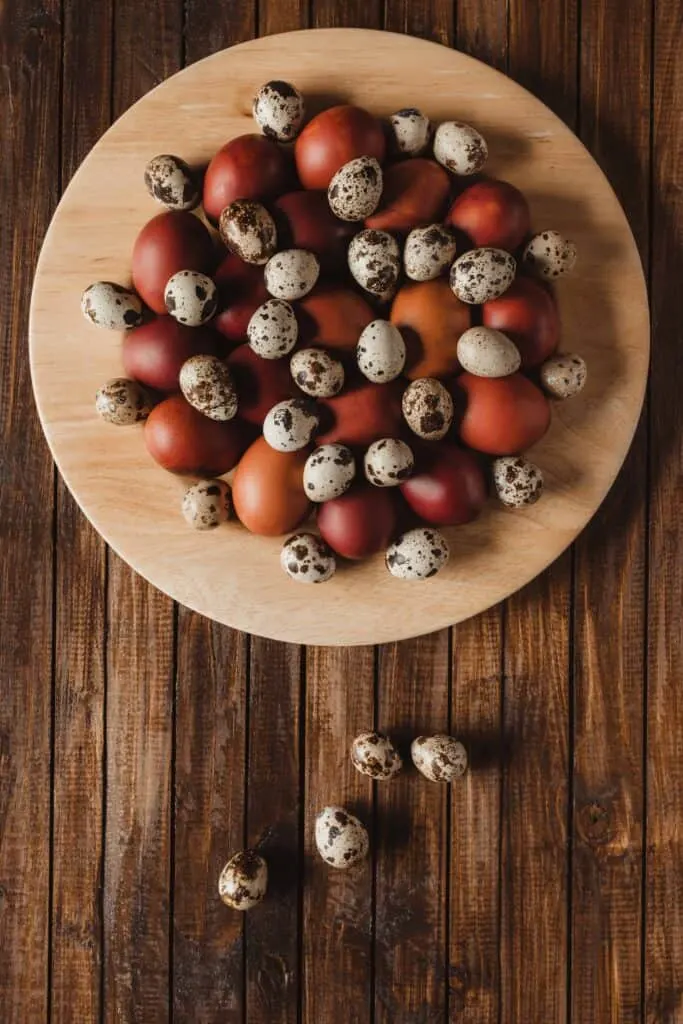
How Quail Compare to Chickens
The main difference between quails and chickens is, of course, their size. They also require a lot less space. For example, quail require a cage height of just 1.5 feet (minimum) is needed. Remember also that as they fly upwards, they are prone to banging their heads, so maintaining a low roof is preferable. Rabbit and guinea pig cages can make good homes for quail, particularly the ones with plastic bottoms and wire tops, as they are easy to clean and provide good ventilation.
Quail farming is very similar to raising chickens. They get most of the same health problems that affect chickens and should never be kept together due to the risk of your chickens contaminating your quail.
Quail don’t eat meat as chickens do, so they must not be given meat products. Chicken feed is not suitable for quail.
Chicken eggs are several times larger than quail eggs, which have a higher yolk ratio than white. They have a richer flavor than chicken eggs but can be used to make many of the same dishes, just making an allowance for their smaller size.
Chickens take a lot longer to start producing eggs than quail, and the same is true of meat. If you are looking for faster food production, quail can be a better option.
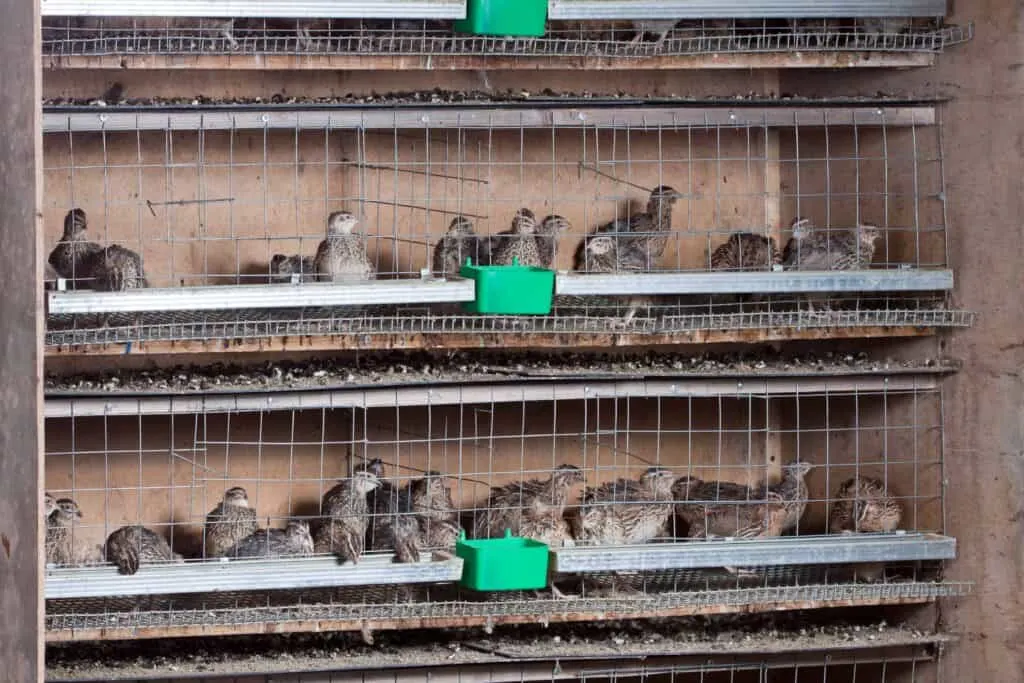
Housing
Apart from a cage with a low roof, quail do well in small spaces as they feel safer. Their natural instinct is to hide from predators, so giving them things to hide behind, such as branches, can enrich their lives and prevent stress.
The benefits to using cages over larger coops or enclosures are that you can get hold of your birds easily, and their eggs are easier to locate.
Many breeders use wire bottom cages, as quail droppings have a high nitrogen content and give off ammonia, leading to respiratory problems. With a wire bottomed cage, the droppings mostly fall through into trays which you simply remove and empty daily. The main disadvantage to wire-bottomed cages is that they can cause foot problems as quails feet are quite soft and sensitive.
The basic requirements of a good quail home are:
- Easy to clean
- Dry
- Well ventilated
- Shelters the birds from heat and cold
- Protect them from predators
If you keep quail in a large aviary or coop, it can be more challenging to find their eggs and to catch the birds if you need to inspect them or give them treatments. A rabbit hutch or guinea pig cage can be an ideal quail house. Or small backyard chicken coops that are not too tall also work well.
If you enjoy a little DIY, a simple cage can easily be assembled using wood and a fine mesh chicken wire. Plenty of plans are available online. This type of coop can also combine a small run.
A home that benefits from being able to be moved around quite easily will provide access to fresh ground or grass when it’s available. This reduced the amount of cleaning out you will need to do.
Egg rollout floor – Many commercial quail cages have a sloped bottom that allows the eggs to gently roll out into a collection slot at the front. This makes egg collection easy and keeps the eggs from getting dirty or damaged.
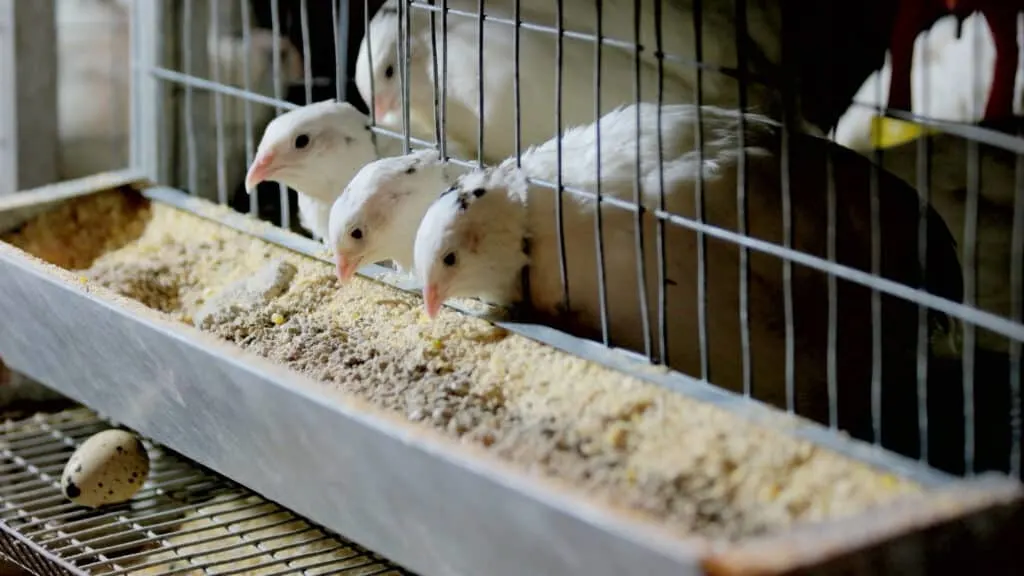
Feeding
Quail are granivores as opposed to chickens which are omnivores like us. Quail predominately eat grains, some fruit, and vegetable matter and insects.
Commercial chicken food is not suitable for quail, although turkey feed is appropriate. For good egg production and growth, quail should be given a feed with a high protein content of over 20%. In the first 8 weeks, they should receive food closer to 28% protein.
You can supplement food rations with some fresh fruit and a few mealworms as a treat.
Feed trays should be thoroughly cleaned and disinfected at least once a week.
If you keep quail for eggs, you’ll need to provide calcium in their diet. This is best done by giving them access to ground Oyster shells, which you can get from your feed supplier. If they don’t receive enough calcium and water, they can become egg-bound. This is when an egg gets stuck in their vent and can prove fatal if it is not spotted.
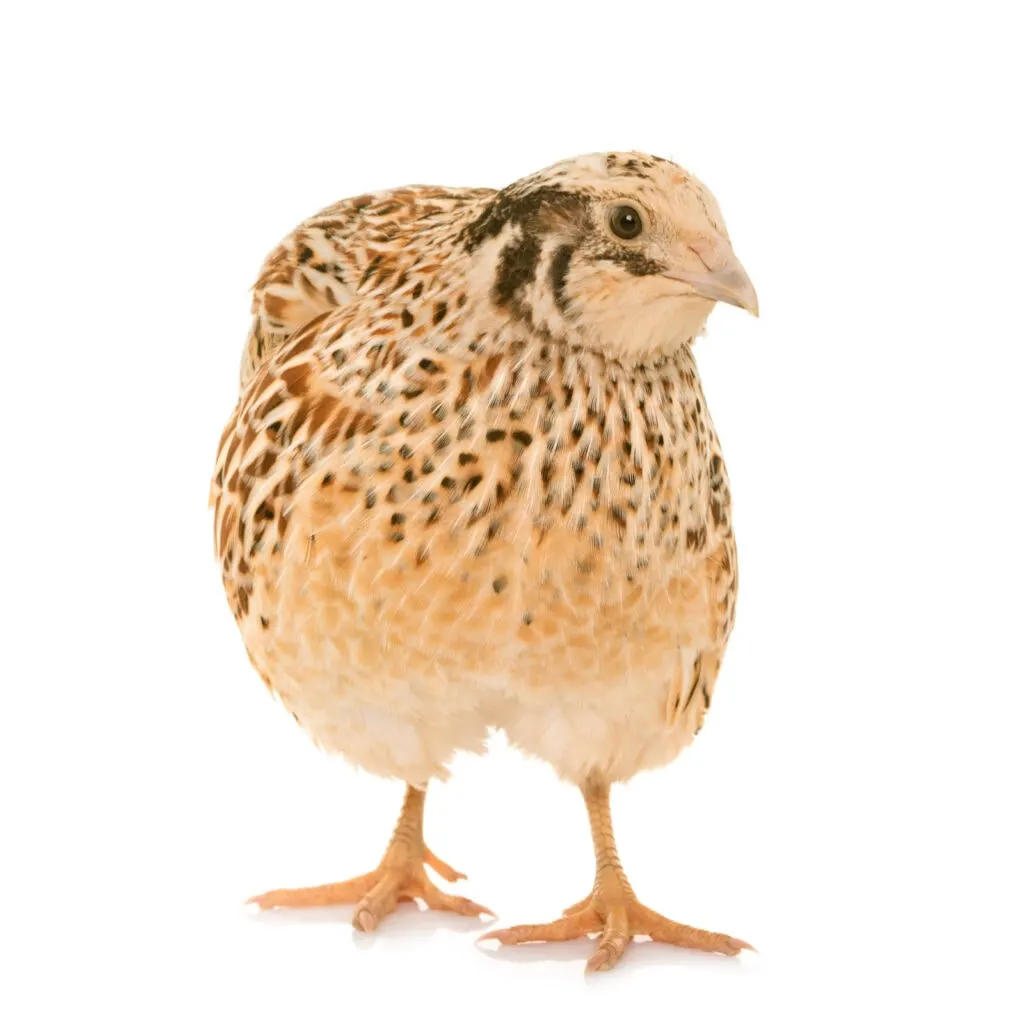
Water
Nipple watering systems are ideal for quail. These self contained systems keep the water clean and healthy and minimize spilling. A heater can also be added in winter for freeze proof winter water.
Summary
Overall, Coturnix quail are just as easy to keep as many breeds of chicken. They are better adapted to living in small spaces and can even be kept in a cage with no need for a yard or any type of outdoor space.
Cleanliness is the key to maintaining good health, along with access to fresh, clean water and the correct type of food.
We hope you’ve enjoyed reading all about Coturnix quail and agree that they are a real alternative to raising chickens.
Coturnix Quail Quick Facts
| Breed Name | Coturnix Quail /Coturnix Japonica/ Japanese Quail |
| Type | Game Bird |
| Size | Very small |
| Heritage Breed | No |
| Average Weight | Male 3.5 to 5 oz. Female 4.2 to 5.6 oz. |
| Weeks To Maturity | 8 weeks on average |
| Average Life Span | 3 to 6 years |
| Color variations | A broad spectrum from dark brown to white |
| Egg Size | Tiny |
| Egg Color | Mottled patches of brown, blue, grey, cream and white |
| Egg Production | 250 to 150 per year |
| Dual Purpose | Yes, produces eggs and meat |
| Temperament | Docile and can be tamed |
| Beginner Friendly | Yes |
| Kid-Friendly | Yes, for older children due to small size |
| Heat Tolerant | Yes |
| Cold Tolerant | Yes |
| Comb Type | Has no comb |
| Broodiness | Rare |
| Flightiness | Can fly but rarely does |
| Noise Level | Low – male quail will trill |
| Unique Traits | Male quail have a distinctive call |
PIN THIS POST
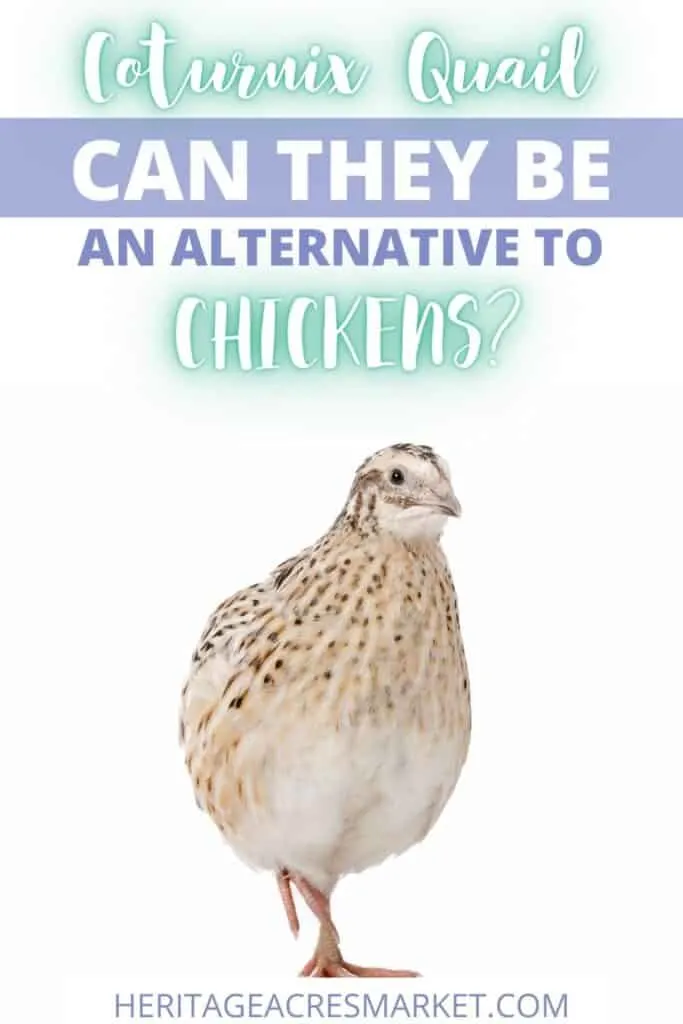

Lee
Saturday 22nd of October 2022
I thoroughly enjoyed reading this. It was well written and highly informative. I am just beginning to raise my first bevy... My son and I incubated a dozen and we have 7 Pharoah quail that are 6 weeks old.. However after reading this article I now realize that is going to be an issue because I have 4 males.... Anyways, if you have any more tips or interesting facts I would definitely like to hear them because we are Thoroughly enjoying our experience thus far.. Thanks...Lee and Ryder
THOMAS BOND
Tuesday 26th of July 2022
Hi, Where can I get European quail (Coturnix Coturnix) quail NOT Japanese quail, but 'Common quail.
Thanks,
Thomas